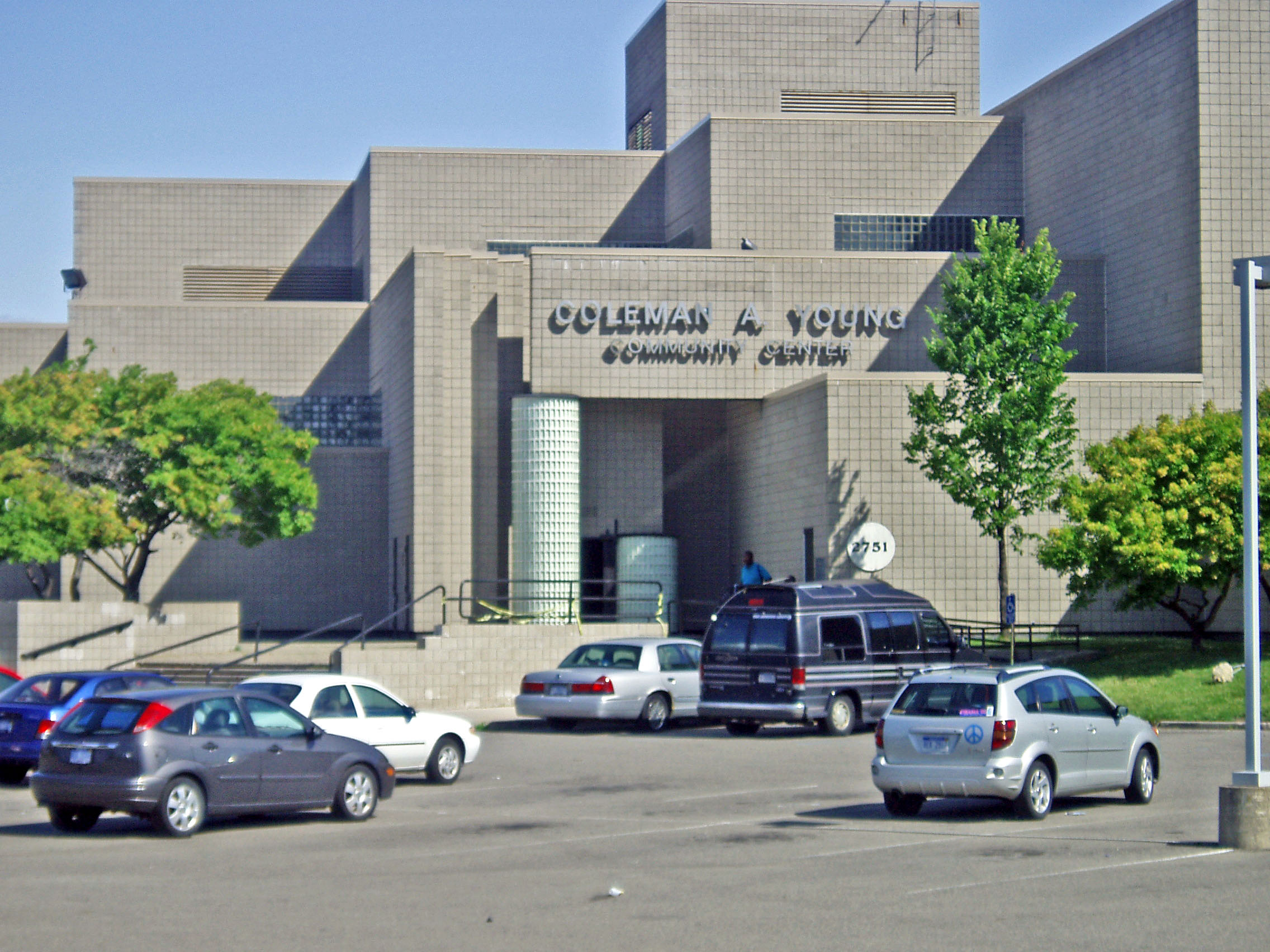

Urban renewal was a popular endeavor in many large cities in the decades after World War II. Mayors presumed that old and dangerous housing could be razed and replaced with attractive new homes that would keep taxpaying, middle class individuals in their cities. The process could be funded, in part, by federal dollars as well as private investments in new housing. In many cities, including Detroit, urban renewal was popularly known as Negro removal since low-income neighborhoods with black residents near downtowns, universities and medical centers were torn down. Between the late 1950s and the early 1970s, a large area of Detroit’s east side continuous to downtown was renewed. This area is bounded, roughly, by East Lafayette on the south, Elmwood Cemetery on the east, East Vernor Highway on the north and Rivard on the west. Dense and dilapidated low-rise structures from the late Nineteenth and Early Twentieth Century were torn out and replaced by attractive low-rise apartment buildings. The major achievement in this area is the important Mies van de Rhoe Historic district with its spacious green Lafayette Plaissance. The larger area includes, I believe, two new public schools, a small shopping center, the large and modern 1300 East Lafayette apartment building and a couple of dozen low rise buildings
One of the rewards you obtain from driving or bicycling around Detroit is finding attracti ve buildings, often where you might not expect them. In the late 1970s, the City of Detroit had the funds to build an attractive recreation center for the large renewed residential area on the near east side. William Kessler led the design group. You might think that there is no way a series of large boxes and cubes could be stacked together to produce a notable building worth a detour when you visit Detroit. However, this is a very appealing and innovative recreational center. When you walk up to this building, you are struck by how interesting it is and how it does not resemble any other edifice in the city. It is, indeed, an array of boxes and cubes, but they were assembled to produce a complicated, meaningful building with an impressive, modern entryway. My pictures do not show the very effective landscaping. Unfortunately, I took pictures of the parking lot. Pictures with a better perspective would show that this structure sits in a large field of green; at least it is lush green from May through October. It is quite a beautiful building, but one that is easily overlooked because it is not on any major thoroughfare.
ve buildings, often where you might not expect them. In the late 1970s, the City of Detroit had the funds to build an attractive recreation center for the large renewed residential area on the near east side. William Kessler led the design group. You might think that there is no way a series of large boxes and cubes could be stacked together to produce a notable building worth a detour when you visit Detroit. However, this is a very appealing and innovative recreational center. When you walk up to this building, you are struck by how interesting it is and how it does not resemble any other edifice in the city. It is, indeed, an array of boxes and cubes, but they were assembled to produce a complicated, meaningful building with an impressive, modern entryway. My pictures do not show the very effective landscaping. Unfortunately, I took pictures of the parking lot. Pictures with a better perspective would show that this structure sits in a large field of green; at least it is lush green from May through October. It is quite a beautiful building, but one that is easily overlooked because it is not on any major thoroughfare.
This residential area of Detroit continues to be attractive and has been improved recently. In 2009, the Dequindre cut through the area—a path used for more than a century by the Grand Trunk Western Railroad to reach their riverfront depot once near when the Renaissance Center is today—was remodeled and opened as a paved trail for walkers, bicyclists and roller bladders. Subsequently, that trail was linked to the much longer trail along the north bank of the Detroit River that connects Hart Plaza to Gabriel Richard Park at the Belle Isle Bridge.
Architect: William Kessler and Associates
Date of Construction: 1981
Architectural style: Modern
Use in 2011: Recreation Center
City of Detroit Designated Historic District: Not listed
State of Michigan Registry of Historic Sites: Not listed
National Register of Historic Sites: Not listed
Picture: Ren Farley
Description prepared: January, 2011
Return to Sports, Parks and Recreation